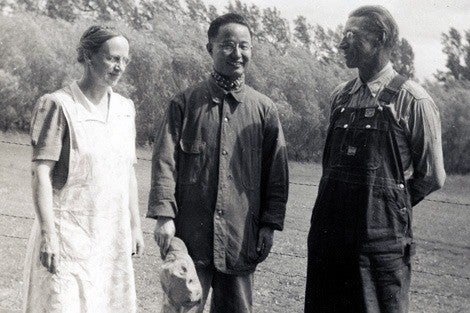In November 1913, the Administrative Board at the Harvard-MIT School for Health Officers voted to admit and credential women. With this historic act, the School for Health Officers—now Harvard School of Public Health—became the first Harvard program to accept women on the same basis as men. The credential awarded was the C.P.H.—a certificate in public health.
So who was Harvard University’s first credentialed woman?
Born in 1891, Linda Frances James received her certificate from the School for Health Officers in 1917. After completing her public health training, she spent the next four years working in Massachusetts and her home state of Minnesota, serving as a health inspector for the Massachusetts Department of Labor and Industry, and later as a research associate on the health of immigrants in industry for the Carnegie Americanization Study.
In 1922, Linda’s professional life took a turn when she married William A. Bennitt, a young attorney from Goodhue, Minnesota, and the couple decided to leave their urban lives to become farmers. Together, they purchased Apple Acres—a 200-acre farm in South Washington County, Minnesota—where they became the sole workers tending to 800 apple trees and more than 1,000 laying hens.
During the same year they arrived on the farm, the couple joined their neighbors in demanding electric lines to their farms. As a result of their efforts, electricity came to Washington County in 1938. A year later, in 1939, Linda was recruited by the educational staff of the Agricultural Adjustment Administration (AAA)—an agency created in 1933 by the New Deal. The AAA originally aimed to increase farm income by controlling production but eventually shifted to authorizing crop loans and offering crop insurance on wheat threatened by drought. Linda’s role was to educate town women on farming problems and promote community dialogue. For the next four years she traveled statewide to organize town meetings and lead discussions on farming issues, stopping only when the program lost congressional funding in 1943.
Returning to farm life in Washington County did not suppress Linda’s dedication to activism and education. In 1945, she began a social service program for young children focused on creating a sense of personal responsibility for community life in a democracy. Linda also became involved with the Upper Midwest Women’s History Center, a regional teacher-training center that helped educators integrate women’s curriculum into regular history classes. Additionally, both Linda and William were active in local war-related efforts.
In 1958, Linda and William sold Apple Acres and spent the next four years traveling both internationally (taking a freighter trip around the world, and excursions to Europe and the Middle East) and coast-to-coast in the U.S., living in a little house on a truck. In 1961 the couple moved to the Penney Farms Retirement Community in Clay County, Florida. Linda died in February 1983 at the age of 92; William died a year later in 1984.
A page of the University of Minnesota’s Class of 1914 yearbook includes a portrait of a young Linda. She is described as “Suffragette, rather militant. We’d like to see you mad.” Linda was a strong woman with a passion for education and public service; her early beginnings as the first woman graduate with a certificate from Harvard University eventually led her to a long, fulfilling life and career as an academic, educator, agriculturalist, and activist.
This essay is adapted from two pieces researched and written by Heather Cristiano, Archivist for Harvard School of Public Health, for Countway Library’s Center for the History of Medicine News. You can read the originals in two parts: Part 1: Lost and Found: the First Woman with a Harvard Credential, and Part 2: Linda James’ Post-Harvard Career in Public Health.
* * * * *
Is there an event, person, or discovery in Harvard School of Public Health history that you’d like to read about? Send your suggestions to Centennial@hsph.harvard.edu.
